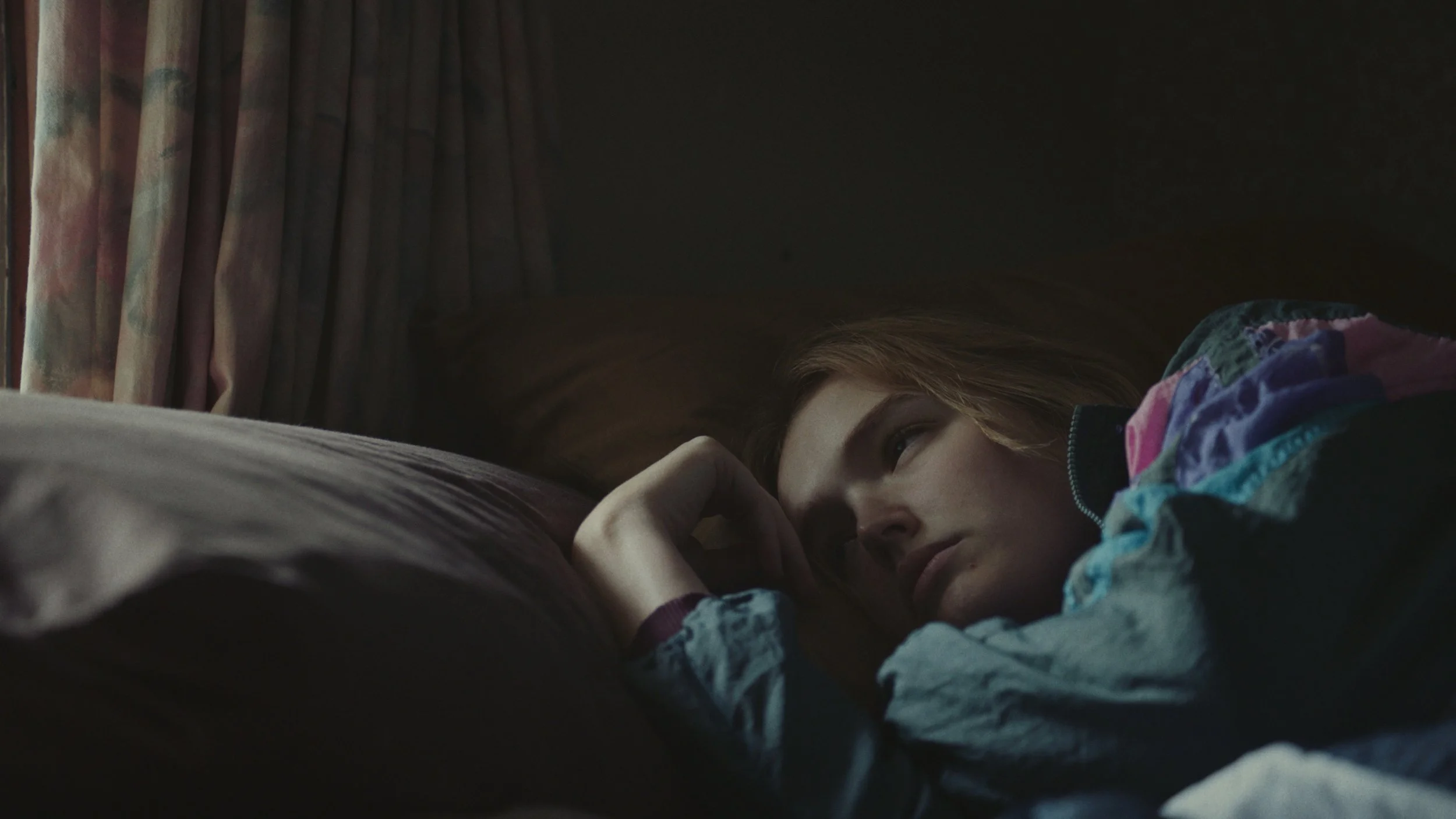“To Kill a Wolf” is a Broody, Masterful Fable
The point of fairytales and fables is to teach kids the concepts right and wrong from a young age. We present good and bad as absolutes on opposite ends of the spectrum we use to carry ourselves in the world. These tales are a blueprint for young people, but as one gets older, it becomes clear that choices are rarely right and wrong. That the world exists more in a hazy, gray in-between where choices are far more difficult than those fairytales led us to believe. Kelsey Taylor has reimagined the story of Little Red Riding Hood into To Kill a Wolf, where the scariest thing you can come across in the woods is not a wolf.
The Woodsman (Ivan Martin) has built a life on the edge of society in the Pacific Northwest. His existence is solitary, spending his days checking wildlife traps, sweeping the forest with a metal detector, and tinkering with his beloved stereo system. On one of his daily walks, he comes across a teenage girl (Maddison Brown) barely clinging to consciousness. He takes her to his cabin and provides her with clothes, food, and shelter. She’s clearly running from something or someone, but she won’t open up to him. The Woodsman wants to help this girl get back home, but when she takes him to an empty house many hours away, he realizes there’s something dark lurking in her past. The same can be said for him, and in showing each other kindness, they will find a way to accept their past.
Credit: To Kill A Wolf (2024)
Like the fairytale it’s based on, To Kill a Wolf plays on the viewer’s expectations. The hair on the back of your neck should raise a little bit when a gruff, silent man takes a teenage girl back to his cabin. We’ve seen the other version of this movie a million times, and it’s rare that the girl makes it out alive. In the case of To Kill a Wolf, our expectations and first impressions are wrong. The Woodsman is gentle and intuitive. He sees pain in this young girl and recognizes it because he knows guilt and sadness intimately. He too is weighed down by these emotions and is unsure how to live with them. That’s why he has shut himself wholly away. It’s easier to be alone, to remove himself from the equation, than it is to face the source of these feelings head-on. The relationship between the girl and the Woodsman is paternal and skittish. They’re both worried that if they open up, if they’re honest about their past, they will lose the small amount of human connection they have. Of course, closeness between humans comes from sharing the good, the bad, and the hazy, gray in-between.
To Kill a Wolf is a masterful slow build of a film. It’s hard to call it a drama because it’s more than that. There’s a sense of dread that finds its way into every inch of the frame, much like the creeping fog of the film’s Pacific Northwest setting. These huge expanses filled with looming trees are the sort of places where secrets can be kept. Where uncertainty and isolation breed. What’s so powerful about To Kill a Wolf is that it banks on the viewer assuming the unnamed horror of the film lies somewhere in the forest. In reality, this natural world is a place where healing can happen. Where secrets can be delicately revealed to trusted strangers.
Credit: To Kill A Wolf (2024)
“If you can’t help yourself, help someone else,” the Woodsman tells the young girl. It’s his explanation as to why he’s showing kindness to the girl. Both of them feel the weight of their different traumas pulling them down, but recognize that they can be of service to someone else. To Kill a Wolf is utterly commanding in its deconstruction of trust and creates a deeply evocative conversation about what redemption looks like. Taylor has crafted something so tightly wound that watching the perfectly laid breadcrumbs paint new perceptions is a true thrill for the viewers. To Kill a Wolf may have started as a modern retelling of Little Red Riding Hood, but Taylor has made a film that speaks to our modern world.
support your local film critic!
~
support your local film critic! ~
Beyond the Cinerama Dome is run by one perpetually tired film critic
and her anxious emotional support chihuahua named Frankie.
Your kind donation means Frankie doesn’t need to get a job…yet.
Follow me on BlueSky, Instagram, Letterboxd, YouTube, & Facebook. Check out Movies with My Dad, a new podcast recorded on the car ride home from the movies.


